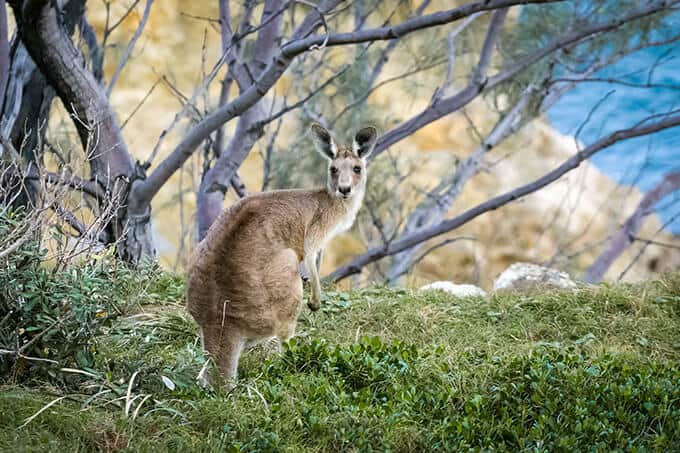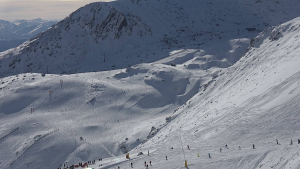What To Watch Out For This Season – The Roads And The Roos

Mountainwatch | Lulu Wilkinson
Getting to and from the skifields is part of the adventure – planning your day, recapping and exaggerating stacks and achievements and trying to get a decent enough reception to listen to SnowFM and check your Mountainwatch app for realistic conditions. But add frisky wildlife to the mix of icy, dark roads and things can quickly go from fun to catastrophic.
Talk to anyone who has travelled regularly to the snow and they’ll share a story about hitting an animal. A few years ago, I did some work for an insurance company and they told me one of their biggest claim hotspots was the alpine region and nearby surrounds, like Queanbeyan, NSW.
Roos down the snow are generally seen as a pest for the residents – they’re destructive, they munch your veggie patch and bang up your fences. But for us snow visitors, they’re an iconic part of the trip – bouncing around lodges on icy mornings and lifting their heads to check you out as you zoom past.

As a kid, I was beside myself to spot wombats ambling and it’s been years since I saw emus trotting around but last year, the Aussie fauna must have had an amorous springtime because the natives were out in abundance. On my last trip down, I dodged a giant echidna crawling across a dirt road, spotted groups of emus racing through trees, saw foxes darting around and even managed a bloody koala one day.
With all that wildlife however, comes the ‘dead life’. Come July, the roadside is littered with roos, foxes and loads more wombats that I can remember, their swollen bellies spray-painted with sad brandings. If you’ve ever hit a wombat, you’ll know it’s like ramming a block of concrete – it absolutely decimates your car, not to mention the poor wombat. You might wonder who could hit a slow moving wombat but the fact is, on a dark road with lowbeams on, they’re tricky to see.

Roos on the other hand, bounce out quicker than you could ever spot them and cause massive damage and potentially even fatal accidents – for driver and kangaroo. NRMA claims that 80% of animal collisions on NSW roads involve a kangaroo. The stories are common but they’re also filled with an ominous warning – don’t mess with the roads at the snow.

Driving Tips
If you’re a newcomer or even a veteran, here are a few quick tips for staying safe on our alpine roads.
- Avoid driving at dawn, dusk and night if you can as it is when animals are most active. The last two are generally when you’ll be coming back from the snow and chances are you’ll also be tired. Take it easy and keep your focus sharp.
- Slow down. Wiping off speed is your best bet for lessening impact. 80km an hour has a vastly different effect than 100km.
- If a roo actually jumps out or is already on the road, break in as straight a line as possible. Don’t swerve or gently steer until you’ve slowed down – experts say you are better off hitting a roo than ending up having a bigger crash.
- Pay attention to animal alert signs. Also keep an eye out for other animals – if there’s a kangaroo hanging out on the side of the road, chances are there are more close by. A higher number of dead roos in a zone is also a sad insight that it may be an area frequented by wildlife.
- If you do hit an animal and are safe yourself, then be a decent human and try to check on it. Pull over to a safe space and do not get too close – even a very injured roo can issue a tremendous hind kick. If the animal has been killed, NSW Roads and Maritime services recommend you remove it from the road ONLY if it is safe to do so. Be especially careful with native animals as they may have babies in their pouches. Call the Wildlife and Information rescue service (WIRES) on 1300 094 737 and report the accident so they can check if there is a baby and care for the animal if it is injured. If necessary, call the local police and report the accident and state of the animal.
Drive safely out there – we’d rather you on the slopes than at a panel beater’s or hospital bed.




